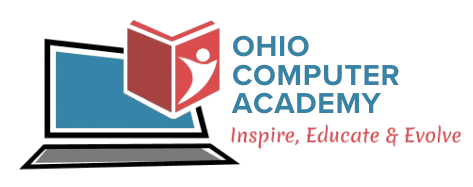Launch your career in API development by building in-demand skills and becoming job-ready in 30 hours or less.
Highlights
Upgrade your career with top notch training
- Enhance Your Skills: Gain invaluable training that prepares you for success.
- Instructor-Led Training: Engage in interactive sessions that include hands-on exercises for practical experience.
- Flexible Online Format: Participate in the course from the comfort of your home or office.
- Accessible Learning Platform: Access course content on any device through our Learning Management System (LMS).
- Flexible Schedule: Enjoy a schedule that accommodates your personal and professional commitments.
- Job Assistance: Benefit from comprehensive support, including resume preparation and mock interviews to help you secure a position in the industry.
Outcomes
Upon successfully completing the Advanced Python Training course, participants will gain:
- Understand API Fundamentals: Gain a solid understanding of APIs, their types, and how they enable communication between different software applications.
- Master RESTful API Concepts: Learn the principles of RESTful API design, including endpoints, resources, HTTP methods, and data formats like JSON and XML.
- Use Tools for API Testing and Debugging: Develop proficiency with tools like Postman to create, test, and debug API requests effectively.
- Handle API Authentication and Security: Understand API security concepts, including API keys, token-based authentication, OAuth, and best practices for securing API access.
- Build Basic APIs: Gain hands-on experience building simple APIs, creating endpoints, managing data, and handling requests and responses.
- Integrate APIs into Applications: Learn how to consume APIs in web and mobile applications using JavaScript, including handling asynchronous requests and displaying API data.
- Document APIs for Better Usability: Understand the importance of API documentation and learn to use tools like Swagger to create clear and accessible documentation.
- Introduction to GraphQL: Explore the basics of GraphQL, including queries, mutations, and how it differs from REST, to broaden your understanding of API options.
- Complete a Final API Project: Apply your skills by building or integrating an API for a capstone project, reinforcing practical application and job-readiness.
About
The Intro to APIs course is designed for aspiring developers looking to understand and work with APIs, a fundamental skill in modern software and web development. This comprehensive course introduces the essentials of APIs, covering types like REST and GraphQL, and the role APIs play in enabling communication between applications. Through hands-on exercises, students will learn how to create and test API requests, handle responses, and implement security best practices.
The course also provides practical experience in consuming APIs within web applications, using tools like JavaScript and Postman, and offers insights into building simple APIs from scratch.
Key Learnings
- Understand what APIs are, the types of APIs (REST, SOAP, GraphQL), and how they enable communication between applications.
- Learn the principles of REST architecture, including endpoints, resources, and HTTP methods like GET, POST, PUT, and DELETE.
- Gain experience in making API requests, handling responses, interpreting status codes, and managing headers.
- Develop proficiency in using Postman to create, test, and debug API requests, helping you work with APIs more efficiently.
- Learn about API security essentials, including API keys, token-based authentication, OAuth, and best practices for protecting API access.
- Get hands-on experience in creating basic APIs, defining endpoints, and managing data in JSON format.
- Practice integrating APIs into web applications using JavaScript, making asynchronous calls, and displaying API data within a user interface.
- Understand the importance of clear API documentation and learn to use tools like Swagger to create accessible, well-documented APIs.
- Explore GraphQL basics, including queries and mutations, and understand how it differs from REST for optimized data handling.
- Learn how to integrate third-party APIs (e.g., Google Maps, OpenWeather) into projects, applying skills to real-world scenarios.
Pre-requisites
- Basic Computer Skills: Familiarity with using a computer, navigating applications, and understanding file systems will be helpful.
- Fundamental Understanding of Web Concepts: A basic grasp of how the web works (such as web browsers, servers, and web addresses) is useful but not required.
- Introductory Knowledge of HTML, CSS, and JavaScript: Some familiarity with these web technologies is beneficial, especially JavaScript, as it will be used to make API calls in practical exercises.
Job roles and career paths
This training will equip you for the following job roles and career paths:
- Web Developer
- API Integration specialist
- Front-End Developer
- Back-End Developer
Intro to APIs
The demand for skills in APIs (Application Programming Interfaces) is growing rapidly, driven by the crucial role APIs play in modern software development and integration. APIs enable communication between different software applications, allowing for seamless data exchange and efficient system connectivity. As more businesses adopt interconnected systems, there is an increasing need for professionals who are skilled in API development and integration.
The field of API development is expanding alongside the broader tech industry, where strong skills in API usage and integration are critical to roles in web development, data management, and software engineering. This skill set is increasingly valuable as companies prioritize efficient, scalable digital solutions. The U.S. Department of Labor also projects a positive growth trajectory in related software development fields, making API knowledge an essential asset for anyone entering or advancing in tech careers.
Topics of Course
-
Understanding APIs (Application Programming Interfaces) and their purpose
-
Types of APIs: REST, SOAP, GraphQL, and others
-
Real-world examples of APIs and how they are used in applications
-
Overview of HTTP concepts relevant to APIs (GET, POST, PUT, DELETE)
-
What is a REST API and how it works
-
REST principles and best practices
-
Understanding endpoints, resources, and URLs
-
JSON and XML as data formats in APIs
-
Using HTTP methods in API requests
-
Understanding status codes and their meanings
-
Handling API responses, headers, and errors
-
Introduction to tools like Postman for testing APIs
-
Overview of API authentication and authorization
-
Introduction to API keys and token-based authentication
-
Understanding OAuth and JWT (JSON Web Tokens)
-
Best practices for securing API access
-
Setting up a local environment to build a basic API
-
Creating endpoints and defining request/response structures
-
Managing data in the API using JSON
-
Testing and debugging the API locally
-
Integrating APIs into web and mobile applications
-
Using JavaScript to make API calls (fetch API and Axios)
-
Handling asynchronous requests and responses
-
Displaying data from APIs in an application
-
Importance of API documentation and tools like Swagger
-
Writing clear and comprehensive API documentation
-
Versioning APIs and maintaining backward compatibility
-
Best practices for designing user-friendly APIs


 Free
Free
 Free
Free
 Free
Free

